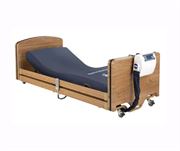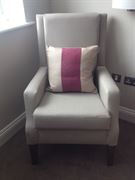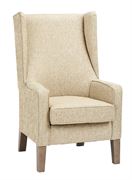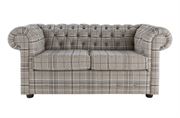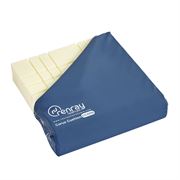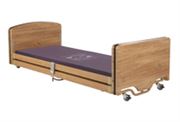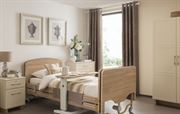Positive Care Home Design for Residents
Good care home interior design is vital to the happiness and wellbeing of your residents. Experienced staff and quality clinical care is no longer enough to impress potential residents and their families. Care homes need novel ways to stand out from their competitors and attract new residents.
Nursing home interior design is more than just choosing a paint colour. There are seven key points to look at when it comes to interior design in care homes:
1) SPACE
Space is the most important design component to consider in care homes.
It acts as a foundation for the entire care home. When designing your space, you should ensure that there is enough area for movement, access, and that residents do not feel claustrophobic.
TIP: Rearranging the space minimises the number of trip hazards and prevents falls.
2) LINE
Lines offer a sense of harmony, contrast and unity within a care home.
They outline forms (see below) and offer visual guides. Lines are simple shapes, so they can give the residents something to rely on when moving around the home.
This is especially helpful for residents with visual impairments or dementia who will struggle with navigating around the home.
TIP: Along a corridor, rails, panels, and picture frames can be used to create lines that highlight doorways.
3) FORM
Form refers to the profile of the room, including any items inside it.
Anything that is three-dimensional is a form. For examples beds, tables, chairs etc. There two main ways to classify forms: geometric vs. natural and open vs. closed.
Getting the correct balance between these forms is key for producing a consistent design that’s practical and looks good. Our team can help you with this here.
TIP: A wood-finish laminate is a good idea for care homes. The wood effect looks natural and gives a sharper look. But because it’s laminated it’s extremely easy to clean and is cost-effective.
4) LIGHT
Light is crucial within care homes, regardless of whether it is artificial or natural.
The ageing eye needs reliable and consistent levels of lighting. So, the balance has to be exact.
You always want to harness as much natural light as you can. By using inventive placement of doors and windows, you can allow extra light into the care home.
You will always need artificial lighting too. This is made up of light fixtures to provide illumination and visibility. As well as lamps and spotlights to create atmosphere.
White light is good for function rooms, like dining areas. Whereas warm lighting is often better for bedrooms where you want residents to feel more at ease.
TIP: Use several small low-intensity light fittings rather than one big high-intensity light fitting. This helps to evade glare which can disturb residents’ vision, causing distress and discomfort.
5) COLOUR
Colour brings the homeliness into care home design. It’s the first thing people think of when it comes to interior design. It is also one of the first things new residents will see when viewing.
The colours used should be understated and dementia-friendly. It’s critical that a care home colour scheme has good contrast. If a chair blends into the wall colour too much, there is a greater risk of a resident falling when they attempt to sit down.
Care home colour schemes should also reflect the room’s function. For example, blues and neutrals are calming colours. So they are perfect for bedrooms. It helps the room feel like a relaxing, safe area.
TIP: Turquoise is considered to be an appetite stimulant. So, using turquoise plates in your dining room can help to improve residents eating!
6) TEXTURE
Texture is a component of design that can get overlooked. However, it is important for bringing a room together and guaranteeing it feels homely.
You have visual texture, which you can see, for instance wallpaper, and real texture, which you can see and feel, for example a soft cushion.
TIP: If you ever feel like there is ‘something missing’ in a room, it could be down to a lack of texture.
Our team can advise on how to add texture to add the flourish to your care home interior design.
7) PATTERN
Patterns are repetitive designs, found in wallpaper and upholstery. Like texture, they add an extra dimension to a room.
Different sized rooms require different types of patterns. Generally, larger rooms can handle more pattern. In a small room, too much pattern can be overwhelming.
The key for care homes is to stick to low contrasting patterns. It’s also helpful to know the style a certain pattern falls into. For example, you wouldn’t want an art deco style in a traditional style room.
TIP: In dementia care settings, stripes need to be considered carefully, they can often be misinterpreted as barriers or bars.
Care home Interior design is an important area if you wish to be successful. There’s a range of enhancements that can be made, from small changes to total makeovers.
Many diverse areas show themselves when caring for the elderly, including dementia and visual impairments. Care homes need the same level of compassion we apply to our own homes. Studies on designing for dementia supports this and shows the benefits of careful deliberation of many features including the use of colour, light, controlled stimuli, way-finding, size and empty spaces. Making a care home building work better would see a reduction in the strains on staff as it has been proven that dementia-friendly design contributes to upholding residents’ independence, reducing confusion and hostility. As the cost of running and staffing a facility is much greater than the build cost, the investment in good design pays for itself both financially and in terms of human dignity.



